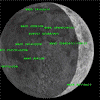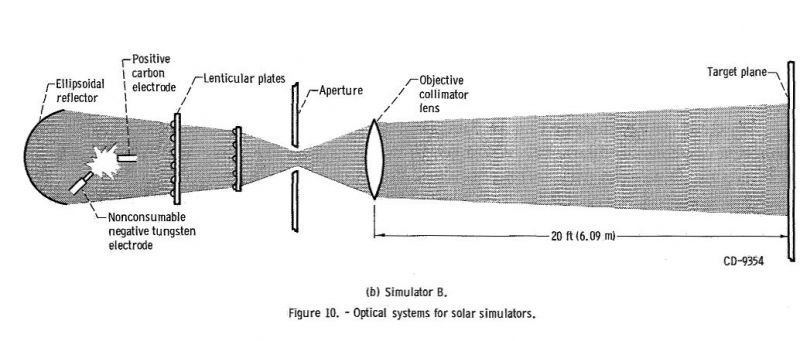 Реклама Google — средство выживания форумов :)
Реклама Google — средство выживания форумов :)
-
![[image]](https://www.balancer.ru/cache/sites/ru/ra/radikal/d/d39/1907/d2/128x128-crop/115a4dc0b612.jpg)
Как освещали сцену на съемках лунной аферы
Теги:
Passat> будь добр, покажи стрелочками, где на фото прожекторы, которые освещают, и где бандура, которая глаза бы сожгла, а то я сам не разберусь никак
Вот смотри
Вот смотри
Прикреплённые файлы:


Passat
втянувшийся
aФон> Ничего особенного, превратят 5 градусов в 0,5.
и мы возвращаемся к тому, о чем тебе уже говорили
Tangaroa> не исчезнут
aФон> Видишь "штыри" торчат из корпуса камеры, - там система охлаждения
"штыри" снаружи, а все тепло на железках внутри. Не останавливайся на достигнутом, придумывай и рисуй систему, которая отводила бы мегаваты тепловой энергии от твоих сот.
aФон> Вот смотри
А что освещает сами прожекторы? Например, тот, что сверху? И балку, на которой он висит?
и мы возвращаемся к тому, о чем тебе уже говорили

Tangaroa> не исчезнут
aФон> Видишь "штыри" торчат из корпуса камеры, - там система охлаждения
"штыри" снаружи, а все тепло на железках внутри. Не останавливайся на достигнутом, придумывай и рисуй систему, которая отводила бы мегаваты тепловой энергии от твоих сот.

aФон> Вот смотри
А что освещает сами прожекторы? Например, тот, что сверху? И балку, на которой он висит?



Passat> и мы возвращаемся к тому, о чем тебе уже говорили 
Tangaroa>> не исчезнут
Что не исчезнет?
aФон>> Видишь "штыри" торчат из корпуса камеры, - там система охлаждения
Passat> "штыри" снаружи, а все тепло на железках внутри.
Каких железках?
Там элиптические рефлекторы, они и охлаждаются этой системой
aФон>> Вот смотри
Passat> А что освещает сами прожекторы? Например, тот, что сверху? И балку, на которой он висит?
Отраженный от Аполлона свет, он же освещает и бандуру, которую не включили и не заправили углеродными электродами

Tangaroa>> не исчезнут
Что не исчезнет?
aФон>> Видишь "штыри" торчат из корпуса камеры, - там система охлаждения
Passat> "штыри" снаружи, а все тепло на железках внутри.
Каких железках?
Там элиптические рефлекторы, они и охлаждаются этой системой
aФон>> Вот смотри
Passat> А что освещает сами прожекторы? Например, тот, что сверху? И балку, на которой он висит?

Отраженный от Аполлона свет, он же освещает и бандуру, которую не включили и не заправили углеродными электродами


Passat
втянувшийся
aФон> Что не исчезнет?
Память, как у рыбки?
aФон> Каких железках?
на сотах твоих
aФон> Отраженный от Аполлона свет, он же освещает и бандуру, которую не включили и не заправили углеродными электродами
Значит, ты на этой фотографии даже электроды разглядел, которых нет? Браво!
Память, как у рыбки?
aФон> Каких железках?
на сотах твоих
aФон> Отраженный от Аполлона свет, он же освещает и бандуру, которую не включили и не заправили углеродными электродами
Значит, ты на этой фотографии даже электроды разглядел, которых нет? Браво!



Passat> Значит, ты на этой фотографии даже электроды разглядел, которых нет? Браво! 
Конечно разглядел, там видны ПУСТЫЕ отверстия в центре сотовых рефлекторов, в которых должны быть электроды, но их там нет

Конечно разглядел, там видны ПУСТЫЕ отверстия в центре сотовых рефлекторов, в которых должны быть электроды, но их там нет


Passat
втянувшийся
aФон> Конечно разглядел, там видны ПУСТЫЕ отверстия в центре сотовых рефлекторов, в которых должны быть электроды, но их там нет



А ты сам то читал пдфку, которую сам же и выкладывал? Или то только картинки разглядываешь и сам придумываешь, что же такое на них нарисовано?



А ты сам то читал пдфку, которую сам же и выкладывал? Или то только картинки разглядываешь и сам придумываешь, что же такое на них нарисовано?


Tangaroa>> не исчезнут
aФон> Почему?
Ты не понимаешь? Беда-беда. Ну, зато ясно, почему ты опровергутан, а не человек.
aФон> Почему?
Ты не понимаешь? Беда-беда. Ну, зато ясно, почему ты опровергутан, а не человек.


Passat> А ты хоть представляешь, какой поток тепловой энергии надо будет рассеять от этой бандуры?
..причём в вакууме!
..причём в вакууме!


Passat>> Значит, ты на этой фотографии даже электроды разглядел, которых нет? Браво! 
aФон> Конечно разглядел, там видны ПУСТЫЕ отверстия в центре сотовых рефлекторов, в которых должны быть электроды, но их там нет
аФоний, судя по схеме дуга стоит прям перед зеркалом, а все линзочки-диафрагмочки собраты в этих твоих "пустых трубочках"

aФон> Конечно разглядел, там видны ПУСТЫЕ отверстия в центре сотовых рефлекторов, в которых должны быть электроды, но их там нет
аФоний, судя по схеме дуга стоит прям перед зеркалом, а все линзочки-диафрагмочки собраты в этих твоих "пустых трубочках"



Passat
втянувшийся
AlexanderZh> аФоний, судя по схеме дуга стоит прям перед зеркалом, а все линзочки-диафрагмочки собраты в этих твоих "пустых трубочках" 
на самом деле, все еще хуже
Афонька взял картинки двух совершенно разных устройств из двух совершенно разных документов, поместил их рядом и утверждает, что это одно и то же. При этом полностью игнорирует описание бандуры на фотографии в принесенным им же самим документе

на самом деле, все еще хуже

Афонька взял картинки двух совершенно разных устройств из двух совершенно разных документов, поместил их рядом и утверждает, что это одно и то же. При этом полностью игнорирует описание бандуры на фотографии в принесенным им же самим документе



aФон> Ничего особенного, превратят 5 градусов в 0,5.
Гравитационным искривлением луча?
Гравитационным искривлением луча?


AlexanderZh> аФоний, судя по схеме дуга стоит прям перед зеркалом, а все линзочки-диафрагмочки собраты в этих твоих "пустых трубочках" 
Вверху схема, а внизу реализация, внизу никакой дуги нет, там даже электроды не вставлены
То, что ты принял за дугу на нижнем фото - это асферическая линза, вынесенная за тубус и расположенная недалеко от фокуса эллиптического зеркала.

Вверху схема, а внизу реализация, внизу никакой дуги нет, там даже электроды не вставлены
То, что ты принял за дугу на нижнем фото - это асферическая линза, вынесенная за тубус и расположенная недалеко от фокуса эллиптического зеркала.


Passat> Афонька взял картинки двух совершенно разных устройств из двух совершенно разных документов, поместил их рядом и утверждает, что это одно и то же.
Это так, но подобная схема описана во многих документах НАСА, например, тут
См. также
> https://ntrs.nasa.gov/archive/nasa/casi.ntrs.nasa.gov/19670023226.pdf
Поэтому логично предположить, что именно на базе нее и создан симулятор
Это так, но подобная схема описана во многих документах НАСА, например, тут
The procedures and results obtained in evaluating the performance of a particular commercially available 10-kilowatt-carbon-arc solar radiation simulator are presented herein. This unit, a Strong Arcomatic Solar Radiation Simulator # 75002-A, differs from others in its power range in employing a molded lenticular or mosaic lens optical system and a nonconsumable tungsten negative electrode (refs. 3 and 4). This electrode allows up to 100 hours of continuous operation.
...
At the 6.09-meter distance, the maxi- mum beam diameter was 1.02 meters, but only the area within a 0.66-meter-diametef circle exhibited an irradiance variation of less than ±5 percent.
...
The total collimation angle is 2.3° throughout the test plane at the 6. 09-meter distance. The total collimation angle of the sun by comparison is about 0. 5°.
> https://ntrs.nasa.gov/archive/nasa/casi.ntrs.nasa.gov/19670023226.pdf
См. также
> https://ntrs.nasa.gov/archive/nasa/casi.ntrs.nasa.gov/19670023226.pdf
Поэтому логично предположить, что именно на базе нее и создан симулятор


Это сообщение редактировалось 08.08.2019 в 13:05
aФон> Никто и не оспаривает возможность полетов на Луну
А я и не говорил про возможность. Зачем ты сказал про возможность? Потому что ты дебил или есть ещё какие причины?
aФон> Их и сняли, вот Гордон их повторил
Ты совсем дебил? Только конченый кретин может уверовать, что кривляния Гордона это точное повторение лунных прыжков.
Сам же тут ноет что нужны атлеты-прыгуны и потом показывает тупость от Гордона. Не, аФоня, всё таки ты совсем конченый.
aФон> Не знаю, чего ты там учил, но логику точно не учил
Это те тупорылые басни, которые ты сам себе выдумываешь, ты называешь логикой? Нет, эти бредни я не учил. Я же не дебил.
Я учил логику по книжкам.
aФон> специально, чтобы ими проще было управлять
Тобой управлять вообще элементарно. Ещё в фильме "Буратино" для детей показали как надо управлять лохами. Напиши лоху "кто не верит в аферу тот лох" и лох сразу уверует в аферу.
Hal>> Можешь тут хоть обныться, хоть башку себе об стену разбить, но фото являются доказательствами полетов.
aФон> Очевидно только одно, для получения таких фото должны быть материалы с Луны
Можешь тут хоть обныться, хоть башку себе об стену разбить, но фото являются доказательствами полетов.
aФон> Нет, я тебе привел вариант конкретной реализации имитатора солнечного освещения.
Это и есть очередная тупая басня для оправдания другой своей тупой басни.
Hal>> Тебя всё возят и возят рожей по батарее. А ты всё ноешь и ноешь, что это всё божья роса. И что это тебе только помогает веровать в аферу.
aФон> Ну должен же у тебя быть стимул, считай что возишь, мне по барабану, по факту ты работаешь на мою версию
Тебя всё возят и возят рожей по батарее. А ты всё ноешь и ноешь, что это всё божья роса. И что это тебе только помогает веровать в аферу.
А я и не говорил про возможность. Зачем ты сказал про возможность? Потому что ты дебил или есть ещё какие причины?
aФон> Их и сняли, вот Гордон их повторил
Ты совсем дебил? Только конченый кретин может уверовать, что кривляния Гордона это точное повторение лунных прыжков.
Сам же тут ноет что нужны атлеты-прыгуны и потом показывает тупость от Гордона. Не, аФоня, всё таки ты совсем конченый.
aФон> Не знаю, чего ты там учил, но логику точно не учил
Это те тупорылые басни, которые ты сам себе выдумываешь, ты называешь логикой? Нет, эти бредни я не учил. Я же не дебил.
Я учил логику по книжкам.
aФон> специально, чтобы ими проще было управлять
Тобой управлять вообще элементарно. Ещё в фильме "Буратино" для детей показали как надо управлять лохами. Напиши лоху "кто не верит в аферу тот лох" и лох сразу уверует в аферу.
Hal>> Можешь тут хоть обныться, хоть башку себе об стену разбить, но фото являются доказательствами полетов.
aФон> Очевидно только одно, для получения таких фото должны быть материалы с Луны
Можешь тут хоть обныться, хоть башку себе об стену разбить, но фото являются доказательствами полетов.
aФон> Нет, я тебе привел вариант конкретной реализации имитатора солнечного освещения.
Это и есть очередная тупая басня для оправдания другой своей тупой басни.
Hal>> Тебя всё возят и возят рожей по батарее. А ты всё ноешь и ноешь, что это всё божья роса. И что это тебе только помогает веровать в аферу.
aФон> Ну должен же у тебя быть стимул, считай что возишь, мне по барабану, по факту ты работаешь на мою версию
Тебя всё возят и возят рожей по батарее. А ты всё ноешь и ноешь, что это всё божья роса. И что это тебе только помогает веровать в аферу.


aФон> 1. Не сгорит, он железный.
Басни, басни.
aФон> 2. Фильтр вовсе не обязательно ставить сразу за лампами и 3-метровой длины, как я нарисовал ранее, достаточно отодвинуть на три метра, а длину сот можно взять и 10 см.
И уменьшить яркость ещё на порядок.
Басни, басни.
aФон> 2. Фильтр вовсе не обязательно ставить сразу за лампами и 3-метровой длины, как я нарисовал ранее, достаточно отодвинуть на три метра, а длину сот можно взять и 10 см.
И уменьшить яркость ещё на порядок.


Passat> А ты сам то читал пдфку, которую сам же и выкладывал?
Как ты полагаешь, зачем вот эта наружная бандура нужна, если там не дуговые углеродные электроды, а простые лампы, как ты пытаешься тут утверждать?
Как ты полагаешь, зачем вот эта наружная бандура нужна, если там не дуговые углеродные электроды, а простые лампы, как ты пытаешься тут утверждать?


Это сообщение редактировалось 08.08.2019 в 10:54
aФон>> 1. Не сгорит, он железный.
Hal> Басни, басни.
Это обычная металлическая решетка, в торговых центрах похожие можно на потолках увидеть, правда ячейки покрупнее.
Там нечему гореть
aФон>> 2. Фильтр вовсе не обязательно ставить сразу за лампами и 3-метровой длины, как я нарисовал ранее, достаточно отодвинуть на три метра, а длину сот можно взять и 10 см.
Hal> И уменьшить яркость ещё на порядок.
Да, на порядок - это не так много, как тебе показалось
Вместо освещенности от 500 Вт в небольшом пятне будет, как от 50 Вт - это уже МНОГО.
Hal> Басни, басни.
Это обычная металлическая решетка, в торговых центрах похожие можно на потолках увидеть, правда ячейки покрупнее.
Там нечему гореть
aФон>> 2. Фильтр вовсе не обязательно ставить сразу за лампами и 3-метровой длины, как я нарисовал ранее, достаточно отодвинуть на три метра, а длину сот можно взять и 10 см.
Hal> И уменьшить яркость ещё на порядок.
Да, на порядок - это не так много, как тебе показалось
Вместо освещенности от 500 Вт в небольшом пятне будет, как от 50 Вт - это уже МНОГО.


aФон> То, что ты принял за дугу на нижнем фото - это асферическая линза, вынесенная за тубус и расположенная недалеко от фокуса эллиптического зеркала.
Нет, аФоня, за место для дуги я принял отверстие в зеркале, через которое осуществляется подача электрода. Электродов там не видно, слишком мутная фото, но не факт, что их там нет.
Нет, аФоня, за место для дуги я принял отверстие в зеркале, через которое осуществляется подача электрода. Электродов там не видно, слишком мутная фото, но не факт, что их там нет.


aФон> Это обычная металлическая решетка, в торговых центрах похожие можно на потолках увидеть, правда ячейки покрупнее.
Которую ты никогда не видел. Не видел результаты её работы. Не видел что она может. И просто тупо уверовал, что с её помощью можно сымитировать солнечное освещение.
aФон> как от 50 Вт - это уже МНОГО.
Это тебе кажется что много, потому что ты тупой. Ты решил что раз от лампочки 50Вт тебе светло, то значит можно и освещать.
Которую ты никогда не видел. Не видел результаты её работы. Не видел что она может. И просто тупо уверовал, что с её помощью можно сымитировать солнечное освещение.
aФон> как от 50 Вт - это уже МНОГО.
Это тебе кажется что много, потому что ты тупой. Ты решил что раз от лампочки 50Вт тебе светло, то значит можно и освещать.


aФон>> Я выкладывал не пдфку, а html-ку
Passat> а это разве не ты притащил? Память, как у рыбки?
Да, это один из патентов, в котором описана бандура для симуляции солнечного освещения
Здесь ксеноновые лампы предполагались
В камере УГЛЕРОДНЫЕ
Passat> а это разве не ты притащил? Память, как у рыбки?
Да, это один из патентов, в котором описана бандура для симуляции солнечного освещения
Здесь ксеноновые лампы предполагались
В камере УГЛЕРОДНЫЕ
A drawing of the larger chamber, including the position of simulated solar sources.
RCA Service Company to design and build two vacuum chambers at MSC. The facility was used in astronaut training and spacecraft environmental testing. using carbon arc: lamps, the chambers simulated the sun's intensity, permitting observation of the effects of solar heating encountered on a lunar mission. At the end of July, MSC awarded RCA another contract (worth $3,341,750) for these solar simulators.
> The Apollo Spacecraft - A Chronology. Vol. II. Part 1 (1963 1st quarter)


Passat
втянувшийся
aФон> Ну а отсутствие дуги ты смог заметить? 
ага, ага
беседуют два археолога, англичанин и русский
- мы при раскопках под Лондоном обнаружили медный провод, датировали его серединой 18 века, что говорит о существовании проводного телеграфа в Англии в то время
- а мы при раскопках под Москвой провода не обнаружили, что говорит о существовании беспроводного телеграфа в России в то же время!

ага, ага
беседуют два археолога, англичанин и русский
- мы при раскопках под Лондоном обнаружили медный провод, датировали его серединой 18 века, что говорит о существовании проводного телеграфа в Англии в то время
- а мы при раскопках под Москвой провода не обнаружили, что говорит о существовании беспроводного телеграфа в России в то же время!


 Реклама Google — средство выживания форумов :)
Реклама Google — средство выживания форумов :)
Hal> Которую ты никогда не видел. Не видел результаты её работы. Не видел что она может. И просто тупо уверовал, что с её помощью можно сымитировать солнечное освещение.
Зачем видеть и щупать руками, если можно рассчитать?
aФон>> как от 50 Вт - это уже МНОГО.
Hal> Это тебе кажется что много, потому что ты тупой. Ты решил что раз от лампочки 50Вт тебе светло, то значит можно и освещать.
Ты сопли тут не разводи, а обопрись на число
Например, от 60вт лампочки поток 700 люмен
Поэтому, если наша система этот поток фокусирует на круг диаметром 20 см, то освещенность будет
E=700/0,0314 = 22282 лк
Это очень хорошая освещенность
Зачем видеть и щупать руками, если можно рассчитать?
aФон>> как от 50 Вт - это уже МНОГО.
Hal> Это тебе кажется что много, потому что ты тупой. Ты решил что раз от лампочки 50Вт тебе светло, то значит можно и освещать.
Ты сопли тут не разводи, а обопрись на число
Например, от 60вт лампочки поток 700 люмен
Поэтому, если наша система этот поток фокусирует на круг диаметром 20 см, то освещенность будет
E=700/0,0314 = 22282 лк
Это очень хорошая освещенность


Copyright © Balancer 1997..2021
Создано 20.07.2019
Связь с владельцами и администрацией сайта: anonisimov@gmail.com, rwasp1957@yandex.ru и admin@balancer.ru.
Создано 20.07.2019
Связь с владельцами и администрацией сайта: anonisimov@gmail.com, rwasp1957@yandex.ru и admin@balancer.ru.
 aФон
aФон


 инфо
инфо инструменты
инструменты







